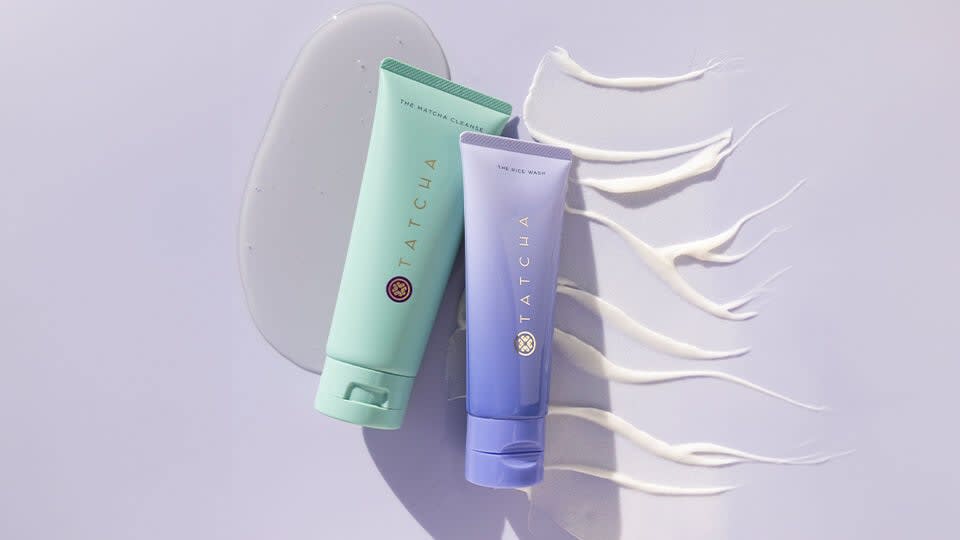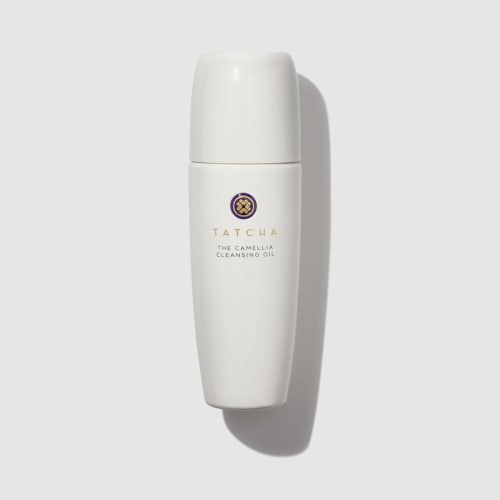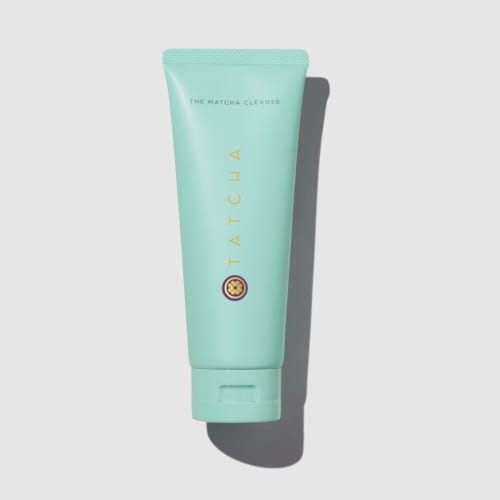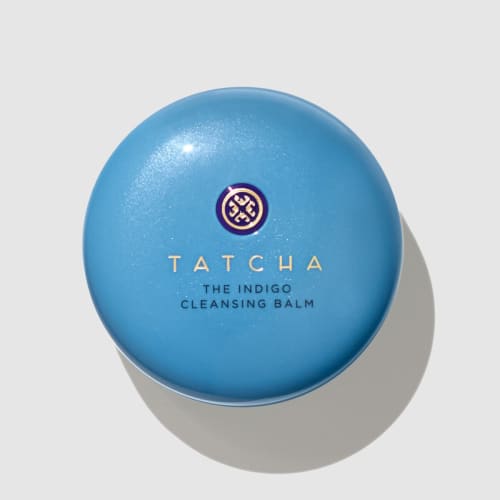“Dry skin is irritated skin,” says authorities like the American Academy of Dermatology Association; So why would you let your face wash dry your skin out?

A face wash’s job is simple, and yet oh so crucial to maintaining optimum skin health. Every skincare routine begins with a cleanse, which in turn, allows each following step to do its part—lest our serums and moisturizers simply sit upon layers of grime. Without face washes, we might as well not have skincare routines at all.
This property isn’t exactly unique to skincare—plenty of processes begin with a thorough wash, from painting a wall to performing open heart surgery. In some cultures, the act of cleansing can take on a ritualistic meaning. In Shintoism, the religion of Japan, the concept of purity is central to many traditions, like the cleansing salt sprinkled before a sumo match to hanging cleansing ō-harae charms in a Shinto temple.
In Japan, purity reverberates through many household acts—even some relevant to skincare. In fact, it was geisha performers and their skin-cleansing rituals that inspired Tatcha’s own collection. The “Kyoto Cleanse” is the two-step protocol favored by these performers, and involves washing with oil and polishing with enzyme powder. Those two steps not only remove surface debris, sunscreen, and makeup, but also unclog pores and prep skin for hydration.
One of the amazing things about the Kyoto Cleanse is how it respects the integrity of skin—lifting off heavy powder makeup while keeping the skin beneath it as soft as silk reams. You could call this the paradox of face wash: A good formula should be effective, but not to the detriment of your skin. In fact, over-washing skin can do more harm than good. The compromise is to choose a gentle, non-drying face wash capable of striking this fine balance. The following points will not only help you understand why this is important, but guide you toward the best non-drying face wash for the job.
Does my skin need to be washed?
No matter your skin type, who you are, where you live, or what you look like, rest assured: Your skin needs to be cleansed regularly.
Experts are all united on this point: Face washes benefit skin. Cleansing does the basic task of removing byproducts of skin’s functions, like sebum or sweat, plus dirt or pollution that has collected throughout the day, or makeup applied hours earlier. All of this needs to be rinsed away before any other skincare steps can be taken.
Proper cleansing can minimize acne breakouts, and even decrease skin inflammation, leading to healthier skin over time. Though some advice recommends cleansing twice a day, in the morning and evening, while other doctors say once is enough—you should consult your own dermatologist for recommendations specific to your skin—all agree that skin should be cleansed at least once daily. How you do it depends on what kind of formula you use.
What types of face washes are there?
Cleansers come in a wide array of textures, each categorized by the most basic components of its chemistry. Some are more commonly recommended for certain skin types over others, but most people choose a face wash that is suited to their preferences—all the better to ensure the habit is kept.
A few types of commonly-encountered cleansers include:
Oils. Since before the existence of modern cosmetics, cleansing oils made from plants or seeds have been used to wash the skin—and it’s no wonder, since oils not only lift away dirt and impurities but also nourish the skin beneath. Oils are commonly beloved by dry skin types, whose own skin produces less oil than others, but they work on all skin types.
Balms. Simply put, a balm is a solid oil that melts down when applied to skin, making it a great cleanser. Some balms are fortified with extra palliative ingredients for sensitive or dry skin types.
Gels. On the other end of the spectrum from oils are gel cleansers, which are water-based and tend to foam up on skin. These formulas do an excellent job of reaching down into the pores of skin, benefitting oily and acne-prone skin types best.
Creams. Often a mixture of water and thickeners like plant oils, waxes, or butters, cream cleansers are much easier on skin than foamier washes. Their moisturizing effect is also said to help boost your skin barrier, too.
Waters. Micellar waters, lightweight emulsions in which tiny cleansing micelles are suspended, are commonly used for gently removing makeup. But they are also not usually heavy enough to deep clean; instead, micellar waters are often used for the first part of a double cleanse.
Tips for gentle cleansing
It’s the American Academy of Dermatology Association’s number one rule for face washing: Be gentle. Here are some things to keep in mind.
Do: Use soft hand motions, or a cleansing cloth. Using face wash with cleansing cloths can help you gently exfoliate skin using the softest of touches. Think of your skin as a fine fabric, like silk, and apply care accordingly.
Don’t: Scrub vigorously or use harsh tools. Bristly brushes or abrasive scrubs can do much more harm than good—which is why dermatologists would rather you not.
Do: Keep your skin barrier in mind. It’s easy to think of washing skin like any other surface. But keep in mind that skin has its own highly specialized structure and function, including the skin barrier that keeps dirt and pollutants out and nutrients and hydration. Your skincare routine should be about protecting this barrier, not tearing it down—starting with your face wash.
Don’t: Dry out skin. The myth of drying skin out to starve off pimples or reverse oily skin is widespread, but it’s just that; totally mythical. Skin needs to be hydrated in order to maintain its own health, which is why our skin care should be focused on providing hydration, not taking it away. A cleanser that strips skin clean of its moisture might feel effective, but it can lead to more problems—including more breakouts and oilier skin—with time.
The best non-drying face washes
“Dry skin is irritated skin,” says the AAD. Rather than start your skincare routine off on an irritating note, try a non-drying face wash. Depending on your skin goals, there are a few options that might work for you. (And before you change up your skincare routine, always talk it over with a dermatologist or licensed aesthetician!)
For normal to dry skin: The Camellia Cleansing Oil
It was one of Tatcha’s first skincare products: A gentle cleanser made from featherweight camellia oil. This geisha beauty secret shows the utmost respect for skin, leaving it better than it finds it: The oil lifts away dirt or residual makeup, and supplies essential amino acids and gentle AHAs like lactic acid to gently resurface as they hydrate.
For oily skin: The Matcha Cleanse
Most gel cleansers have a reputation for leaving skin feeling tight and squeaky-clean—which is, as it happens, the effect of a drying face wash. The Matcha Cleanse is one of few formulas that does the opposite: It’s a gel cleanser that, with a little water, transforms into a refreshing watery-foam that purifies even congested pores without stripping skin, and it’s formulated without fragrance or soap that carry potential to irritate or dry out skin.
For sensitive skin: The Indigo Cleansing Balm
It’s the gentlest formula in Tatcha’s best-selling cleanser range: A cushiony balm infused with skin-soothing Japanese indigo extract. Cleansing lipids effectively remove long-wear makeup, waterproof mascara, and daily build-up, and restore moisture in the process. Hydrated skin is happy skin—non-drying face washes keep things that way.




